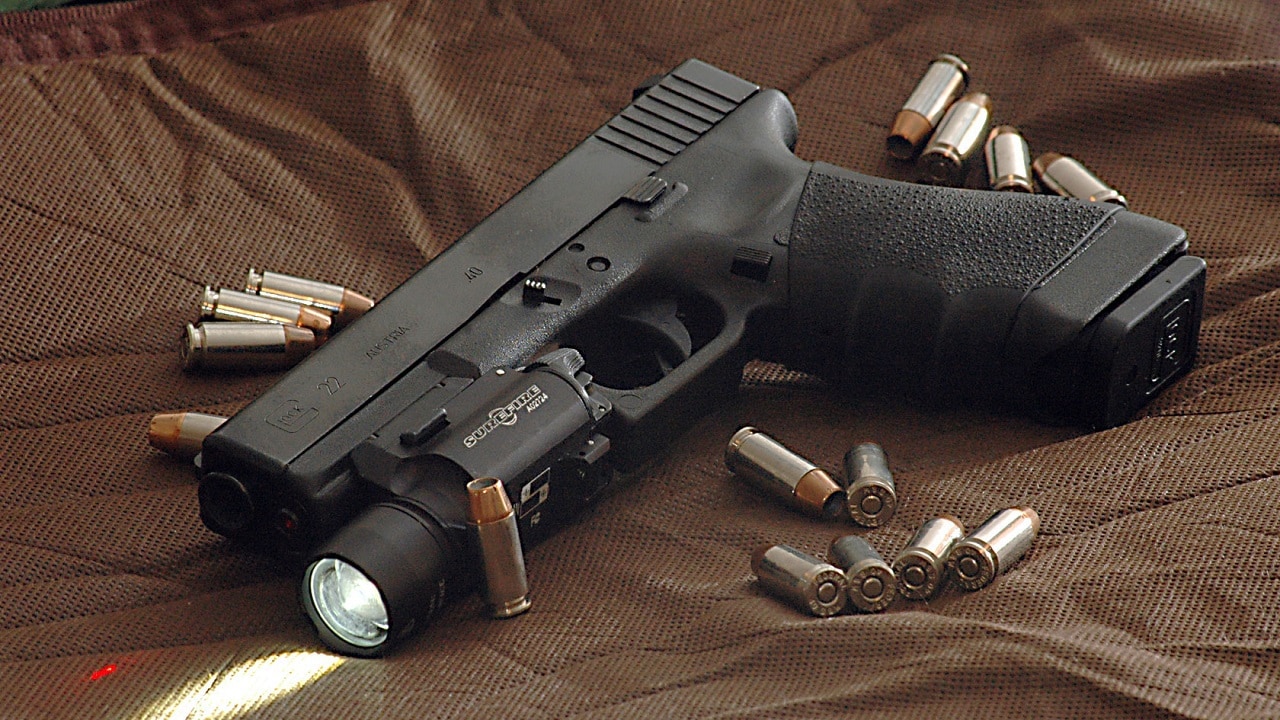We went to the range to test out the Glock 22. Here is what we can tell you: Yes, here we go again: Yours Truly is writing yet another Glock article. But hey, this one’s a bit different, as I’m covering a Glock chambered for the .40 S&W cartridge.
(Subscribe to Our YouTube Channel Here. Check out More 19FortyFive Videos Here)
I am admittedly not a huge fan of this caliber.
It has more intense recoil and muzzle blast than the 9mm Parabellum and .45 ACP cartridges, as well as higher operating pressures that accelerate wear & tear on pistols and thereby reduce service life. What’s more, in my experience, it is not as accurate as 9mm or .45.
That said, many experts still consider it to be the ideal compromise handgun caliber. It has almost the firepower of the 9mm, and almost the big-bore stopping power of the .45, while allowing for smaller-framed guns than, say, the 10mm Auto cartridge.
Several of my friends are fans of the .40 cal Glock 22 in particular, and one of those friends – an old Iraq contracting comrade – specifically requested that I do a G22 write-up.
Glock 22: Origins and Specifications
The Glock 22 made its debut in 1990, the same year as the .40 S&W cartridge itself. This was kind of a big deal, as earlier that year the FBI had adopted the Smith & Wesson Model 1076 and the 10mm cartridge. The 10mm was supposed to be the “next big thing” in law enforcement/self-defense handgun cartridges, but just like that, along comes the .40 in combination with the Glock brand, which at the time was already well on its way to eventually dominating the police handgun market share via its Glock 17 and G19, in 9mm.
It was rough sailing at first for the then-new bigger-bore Glock. The California Highway Patrol, when testing several .40 caliber pistols for its transition from revolvers to autopistols, actually managed to break their G22s – which was especially shocking in light of the G17’s legendary reputation for reliability and durability – and ended up adopting the Smith & Wesson Model 4006 instead.
In fairness to Glock, those G22s that the Chippies managed to break were prototypes, and the manufacturer worked out the bugs out of the system before making the guns available to the general public. In due time, the production-run G22 would boost the Glock’s meteoric rise to popularity, being adopted by law enforcement agencies around the world, including, to name just a few examples, the LAPD, Queensland Police Service in Australia, and Alberta Sheriffs Branch in Canada.
Externally, the G22 looks very similar to the G17, except of course with some minor revisions to the slide and frame in order to accommodate the bigger cartridge. Standard magazine capacity is 17 rounds, a mere two-round dropoff from the G17. Barrel length is 4.49 inches, empty weight is 22.75 ounces, and fully loaded weight is 34.39 ounces.
My Personal Shooting Impressions with the Glock 22
My aforementioned Iraq buddy’s request to do a G22 write-up gave me a valid excuse to blast some holes downrange on a Monday, so with that in mind, it was off to the excellent Silver Eagle Group indoor shooting range facility in Ashburn, Virginia, where I rented a Gen4 Model G22. For ammo, I used 50 rounds of Magtech 180-grain FMJ Flat, and I fired them at the ICE-QT Paper Target. I divided the 50 rounds into four stages of fire: Fifteen rounds of head shots at 7 yards, 10 rounds of center torso shots at 15 yards, 15 rounds of head shots at 25 yards, and finally 10 rounds of center torso shots at 50 yards.
All of the 7-yard head shots were on-point and fairly well-centered, though with a slight tendency to pull high right. At 15 yards, all hits were in the 5 zone, with only one of them straying outside of the tiebreaking 5x ring. At 25 yards, the tendency to pull high right become more noticeable: All of my rounds technically struck somewhere on the head, though to be candid, five of them gave the two-dimensional bad guy a bad haircut, and a sixth nicked his earlobe, which in a real-life situation would have made for one pissed-off perpetrator. At 50 yards, the high right pull really messed me up. The first five rounds went into the target’s left shoulder. For the final 5 rounds, I heavily overcompensated on my “Kentucky windage” and ended up putting three rounds in the opposite shoulder, while two missing altogether! I suppose that served as the latest of many reminders that it’s time to get new eyeglasses. That said, my G17 and my G21SF have historically given me much better results at the 50-yard line.
The trigger was the factory standard 5-pounder, which, though not as crisp as the factory trigger on an HK P7 or SIG P210, is a boon to practical accuracy, as were the sights.
Glock 22 Bottom Line: Yea or Nay?
The Glock 22 gave me more than adequate performance overall, but I’m still in no rush to go out and buy one, as I’m plenty content with my 9mm and .45 caliber Glocks. What’s more, the infamous “Glock Kaboom” incidents that have cropped up in the last couple of decades seem to transpire more with the .40 and 10mm models than with the lower-pressure calibers, so buyer beware. That said, the G22’s overall reputation is still a solid one, so if you’re a fan of either the Glock brand or the .40 S&W cartridge, by all means buy it.
More: MAGA Needs To Move on From Donald Trump
More: Would Putin Dare Use Nuclear Weapons in Ukraine?
More: Putin’s War Machine Won’t Fight in Ukraine?
Bonus: All Things Glock Photo Essay
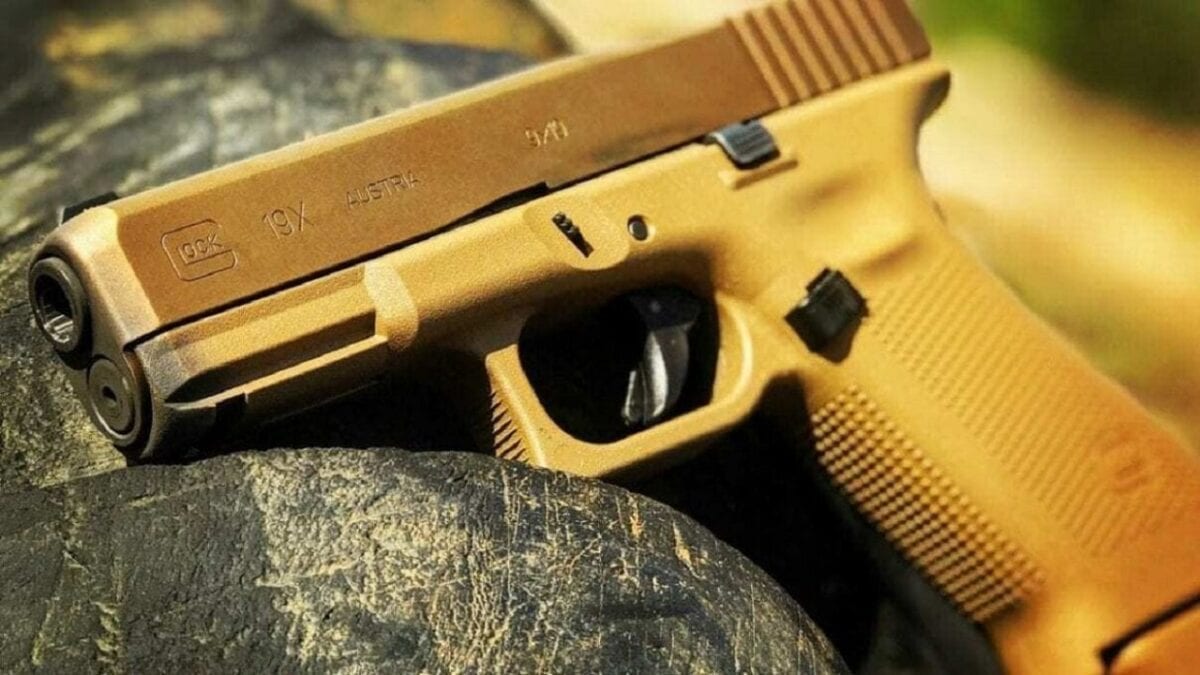
Glock 19X. Image Credit: Creative Commons.
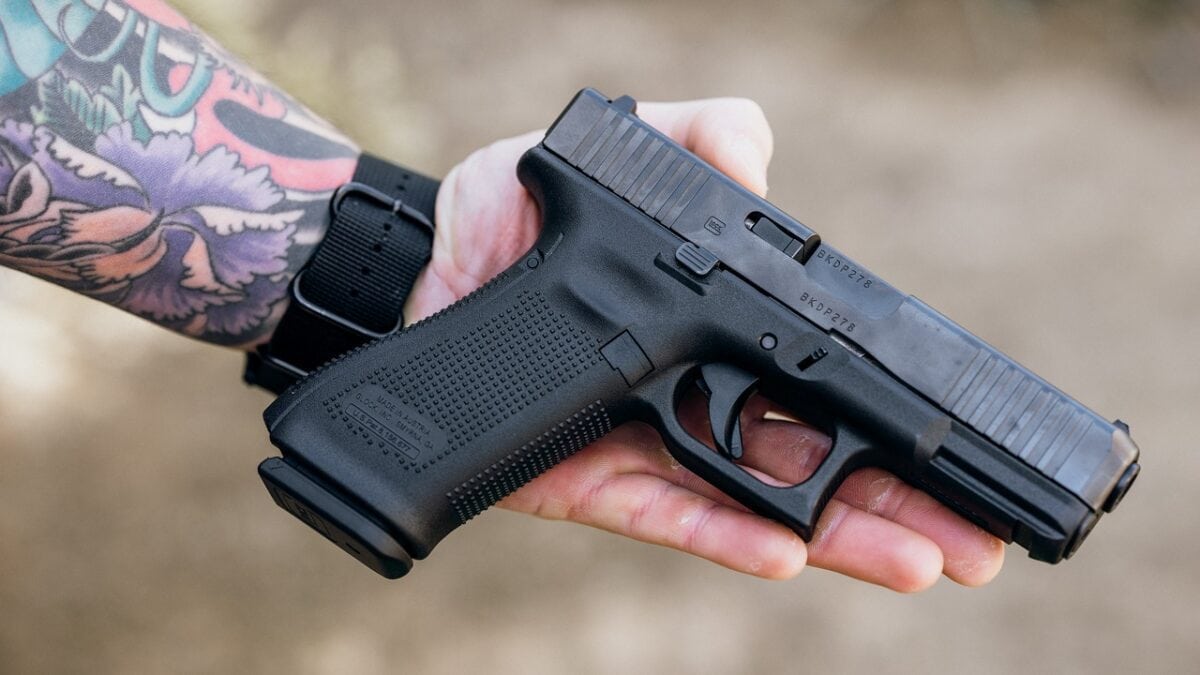
Glock 45. Image Credit: Creative Commons.
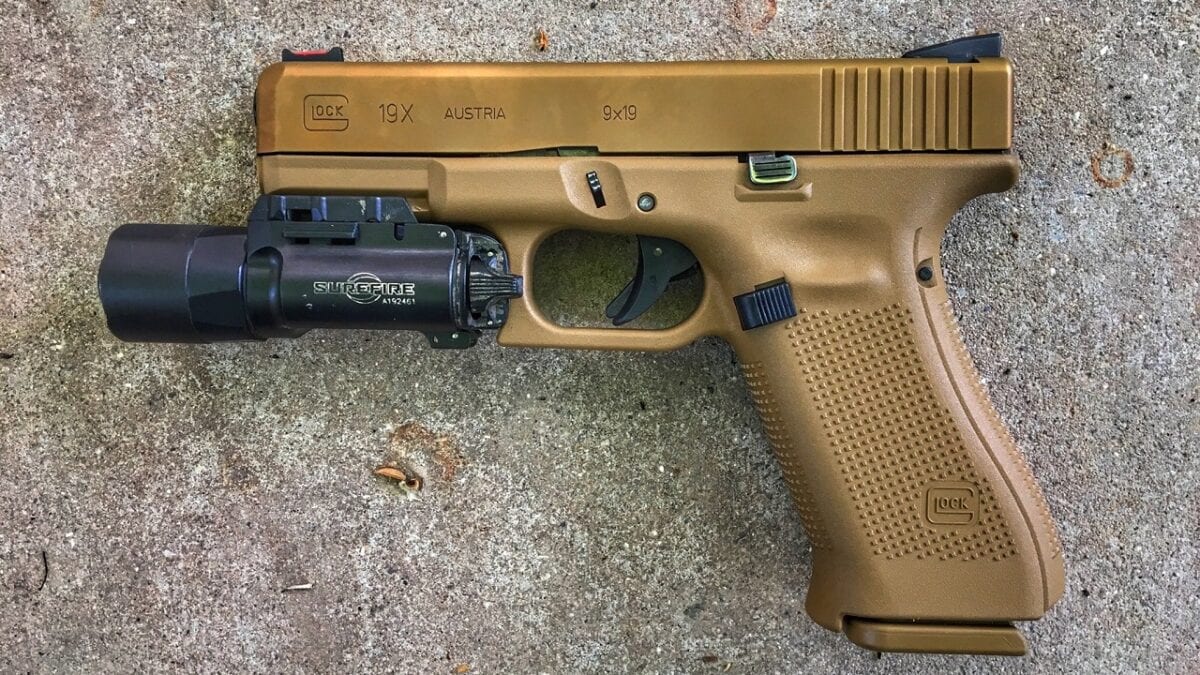
Glock 19X. Image Credit: Creative Commons.
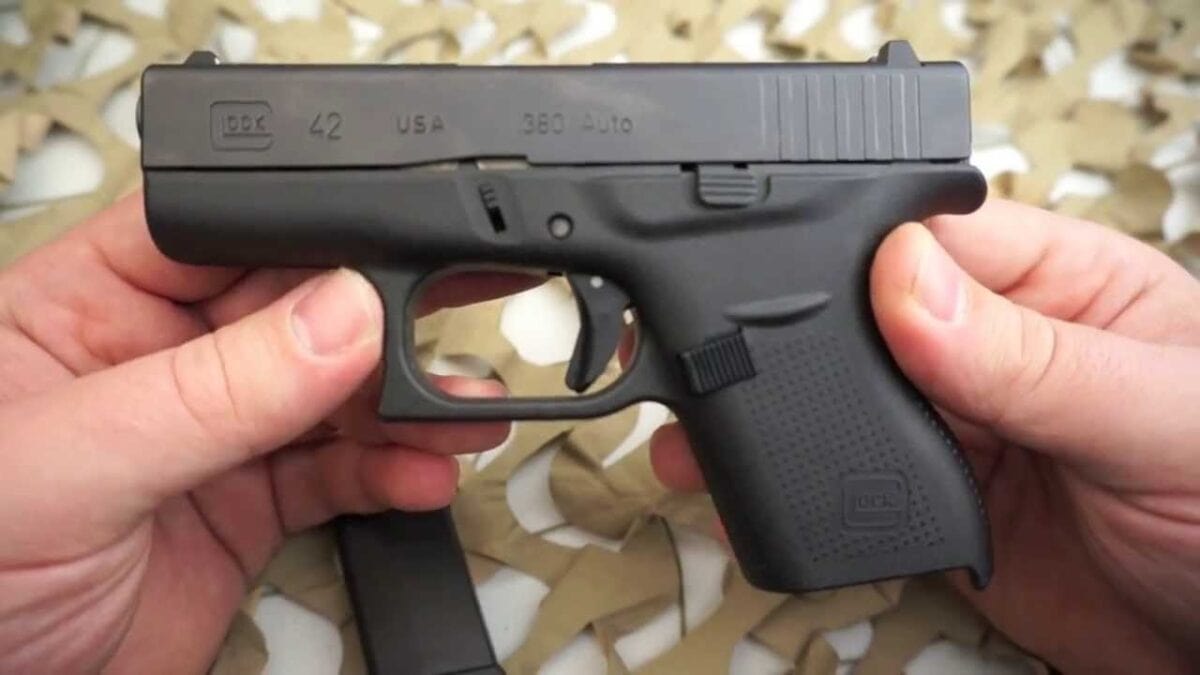
Glock 42. Image Credit: Creative Commons.
Christian D. Orr has 33 years of shooting experience, starting at the tender age of 14. His marksmanship accomplishments include: the Air Force Small Arms Ribbon w/one device (for M16A2 rifle and M9 pistol); Pistol Expert Ratings from U.S. Customs & Border Protection (CBP), Immigration & Customs Enforcement (ICE), and the Federal Law Enforcement Training Center (FLETC) Criminal Investigator Training Program (CITP); multiple medals and trophies via the Glock Sport Shooting Foundation (GSSF) and the Nevada Police & Fires Games (NPAF). Chris has been an NRA Certified Basic Pistol Instructor since 2011. In his spare time, he enjoys (besides shooting, obviously) dining out, cigars, Irish and British pubs, travel, USC Trojans college football, and Washington DC professional sports.

